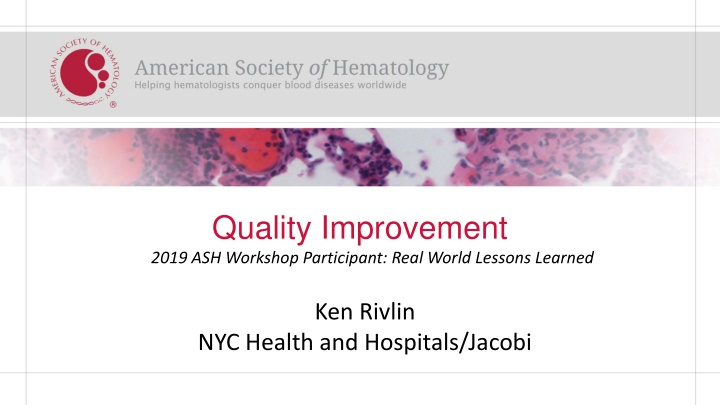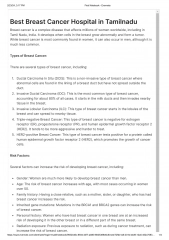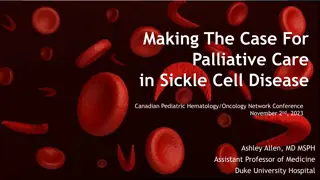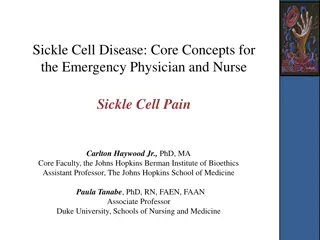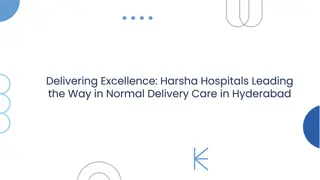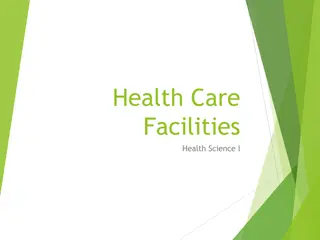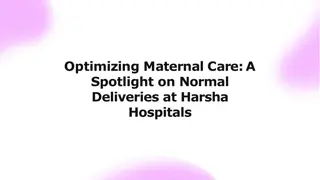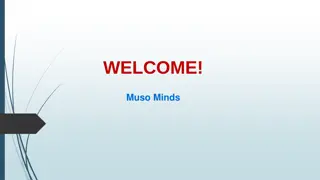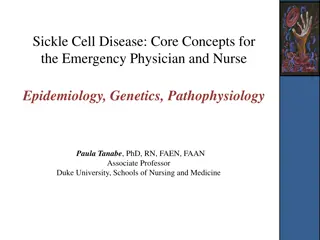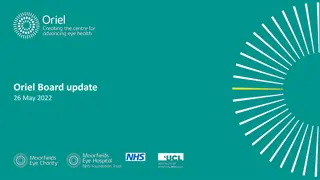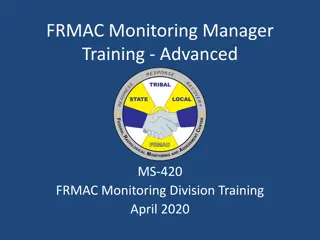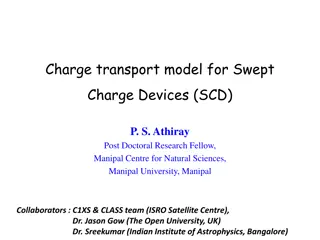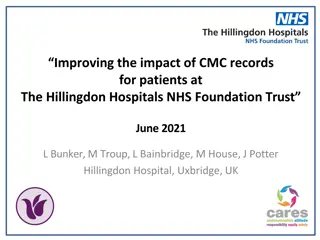Real-World Lessons Learned: Implementing SCD Care in Public Hospitals
Challenges and strategies for enhancing access to comprehensive sickle cell disease (SCD) care within a public hospital system. Delve into the importance of collaboration and driving forces in advancing SCD care.
Download Presentation

Please find below an Image/Link to download the presentation.
The content on the website is provided AS IS for your information and personal use only. It may not be sold, licensed, or shared on other websites without obtaining consent from the author.If you encounter any issues during the download, it is possible that the publisher has removed the file from their server.
You are allowed to download the files provided on this website for personal or commercial use, subject to the condition that they are used lawfully. All files are the property of their respective owners.
The content on the website is provided AS IS for your information and personal use only. It may not be sold, licensed, or shared on other websites without obtaining consent from the author.
E N D
Presentation Transcript
Quality Improvement 2019 ASH Workshop Participant: Real World Lessons Learned Ken Rivlin NYC Health and Hospitals/Jacobi
Disclosures Nothing to disclose
Learning Objectives 1. Understand the challenges and barriers faced when implementing comprehensive sickle cell disease (SCD) care within a public hospital system 2. Discuss strategies to enhance access to comprehensive SCD care through quality improvement 3. Recognize the importance of driving forces and collaboration in advancing SCD care and overcoming systemic obstacles
NYC Health + Hospitals: Overview of Hospital System Largest public hospital system in US Serve all regardless of ability to pay Serve 1.2 million New Yorkers 11 hospitals 5 long-term care facilities 6 Diagnostic and Treatment Centers Federally Qualified Health Center-Gotham Health 28 Centers 70+ Ambulatory Centers MetroPlus Health Plan (Medicaid CMO) 500,000 members 6 of the 28 NYS Designated Newborn Screen Hemoglobinopathy Centers 2 life-span SCD Centers
NYC Health + Hospitals: Overview of SCD Patients Served Commercial 16% Unique SCD Patients Served Overall: 2,500 patients Providing consistent care: 1,200 patients Note: Other NYC Hospitals 40% Medicaid/Uninsured Other 1% Self Pay- the uninsured 5% Medicaid and Medicare 78% Payer Mix
Post-Workshop Challenges: The "Yes, But... Phenomenon Executive Sponsor for Workshop CMO for Ambulatory Care Harlem Hospital Goal rebuild adult comprehensive SCD center Business plan showing savings $1.7 million save by hiring SCD NP Yes, but we need to show income generation 340B Yes, but not part of C-suite thinking PCP taking care of SCD patients left Can t find hematologist Can t find LCSW CMO left CEO of another hospital Yes, this is a critical need Major complaint of his ED doctors not having a real center to refer patients But, right now we have other priorities such as cancer, we will get back to you Of note he helped create a comprehensive SCD center at another hospital
The "Yes, But... Phenomenon (contd) CMO, Accountable Care Organization Yes, it is important But we have other priorities, there is no bandwidth to prioritized SCD You need local hospital buy-in and the leadership as champions CEO of NYC H+H Yes, it is a horrible disparity Work with Health Equity Council, Office of Population Health, and Office of Quality and Safety Goal One adult comprehensive SCD center in each borough Added to priority list for the Office of Finance to develop business plan
Equity and Access Workgroup Proposal and Accomplishments Proposal Enhance Access to Comprehensive Adult SCD Care Accomplishments Utilization of Sickle Cell Disease Registry and EPIC Navigator across NYC H+H Address the Transition and Transfer of Care from Pediatrics to Adult Care Address Barriers to Obtaining Appropriate Pain Treatment Mitigate the Negative Stigma of Individuals Affected by SCD Address Insufficient Use of Disease-modifying Therapies Create a Structure for Robust Continuous Quality Improvement Leverage Support From H+H and Legislators to Supplement Inadequately Resourced SCD Community-based Organizations Provide Access to Clinical Trials Partner with Metro-Plus and Health Homes to Provide Case Management for Patients Mitigate the Neurocognitive Effects of SCD on Mental Health and School Achievement/Performance Leverage our Enterprise-wide Clinical Data to Inform Best Practices and Engage in Clinical Research/Publications/Presentations Create referral system for Community Health Worker Within our System and With CBOs
Differences Through Quality Improvement EPIC SCD Patient Registry Standardized EPIC Documentation Through SCD Navigator Dashboards for Quality of Care (HU, TCDs, and Vaccinations) Patient Summary (Modeled on ASH Summary) Import and reconcile data from non-EPIC systems (via RHIO/HealtheX) EPIC Pain Action Plan or standardized ED pain protocol Includes humanizing documentation what patients want ED providers to know EPIC ASH Transition Tools Referral system for community health workers (HU education/connect unaffiliated patients to medical home) Use of Health Homes for case management (MetroPlus) Educational module for reducing SCD stigma in ED EPIC, an electronic health record system provider; TCD, time critical diagnosis; HU, hydroxyurea.
Building an Electronic Medical Record SCD Toolkit for Quality Improvement
Collaboration for Change Note Systems are perfectly designed to get the results they get To improve you need to change the system To change a system, you need a driving force My organizational culture is Top Down Driving force: They say it is important Driving forces at work at NYC H+H ASH Adult Working Group HRSA Sickle Cell Treatment Demonstration Project SCD QI Project ECHO HHS OMH hydroxyurea grant (shared mental model)/partnership NYSDOH National Alliance of Sickle Cell Centers ASH SCD CTN, ASH Data Hub, and Learning Collaborative Local SCD CBOs: SCTPN, QSCAN, and CSCF Unions: CIR and NYSNA
